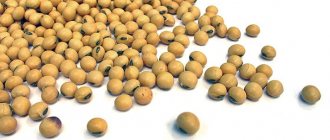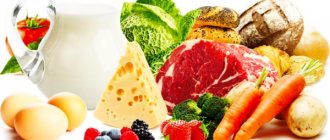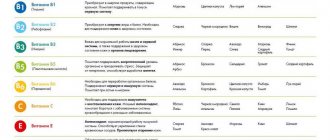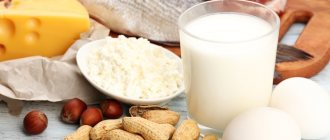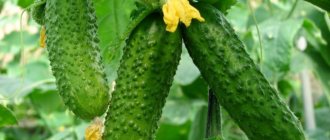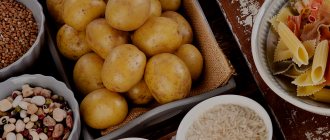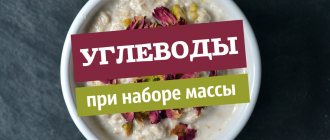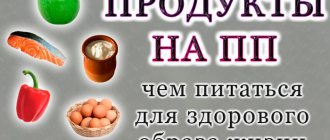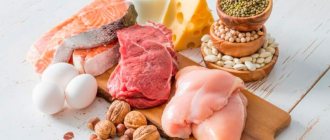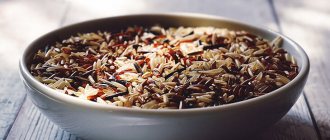If you want to get more protein from plant sources, here are the most effective plant-based protein sources:
- SOY PRODUCTS : Edamame, Asparagus, Tofu, Yofu
- LEGUMES : Beans, Lentils and Peas
- SEITAN
- PORridge : Quinoa, Oatmeal, Buckwheat, Brown Rice
- SEEDS : Pumpkin, Sunflower, Sesame, Chia
- NUTS : Peanuts, Almonds, Cashews, Walnuts and others
Later in this article we will talk in detail about plant protein and products that are its sources.
Consumption Rate | Deficit | Products | Soy Products | Legumes | Seitan | Porridge | Seeds | Nuts | Fortified foods | Additives | Digestibility | Excess
Vegetable Protein Consumption Norm
The daily protein intake is measured in grams (g). It is equal to 50-117 g per day for men and 50-87 g per day for women. For children, the norm is 2.2-2.9 g of protein per kilogram of body weight for children under one year old , and 36-87 g per day for children over one year old .
Many experts believe that slightly more than this amount is needed for optimal functioning of the body. One of the recommendations: 0.8 g per kilogram of weight for an adult and 1-1.5 g per kilogram of weight for the elderly .
The Recommended Dietary Allowance (RDA) for protein used in this article is 50 grams per day.
It is recommended that the proportion of plant proteins in the diet should not exceed 50% for adults and 40% for children . This is due to the much lower digestibility of plant proteins compared to animal proteins.
For foods high in animal protein, see the article “Protein in Foods.”
Varieties of vegetarianism
According to their dietary system, vegetarians are of four types:
- vegans - people who refuse to consume any products related to animals (fish, honey, milk and dairy products, eggs, meat);
- Lacto-vegetarians introduced honey, milk and related products (cheeses, kefir, butter, yogurt) into their plant-based diet;
- ovo-vegetarians replaced milk with eggs, leaving the honey;
- Lacto-ovo vegetarians allow, along with plant foods, the consumption of honey, eggs, milk, dairy and fermented milk products.
There are also raw food vegetarians who do not eat thermally processed foods and do not use spices.
Protein Deficiency
Protein deficiency is one of the main arguments against a vegetarian diet. Therefore, the inclusion of protein-rich plant foods in the diet is of great importance in this case.
In the body, protein is broken down into 20 amino acids needed by various systems and organs. Plant-based protein often lacks one or more of the essential amino acids, so a vegetarian diet requires using a variety of plant-based protein sources to obtain all the essential amino acids.
A deficiency of essential amino acids in the body can lead to serious health problems: swelling, fatty liver, increased risk of fractures and infections, decreased muscle mass and growth problems, excess weight, and deterioration of the skin, hair and nails.
Cauliflower
For years I wasn't a big fan of cauliflower. I mean, what good could there be in this colorless vegetable? But once I began to study the health benefits of cauliflower and all members of this cruciferous plant family, I gave this vegetable the respect it deserves. One cooked cup of this plant contains 2.28 grams of protein, along with enough nutrients to help reduce the risk of heart disease and cancer.
Benefit for health:
- Carotenoids—beta-carotene and phytonutrients—include ferulic acid, caffeic acid, and cinnamic acid. These nutrients help protect the body from free radical damage.
- Sulforaphane is a promising drug in the fight against cancer.
- Omega-3 fatty acids reduce inflammation.
Cauliflower is also a good source of vitamin C, manganese, glucosinolates, vitamins B1, B2, B3, B5, B6, B9, phosphorus and potassium, indole-3-carbinol (fights the first signs of cancer).
Foods High in Plant Protein
Among natural foods, the most plant protein is found in various soy products, as well as beans, grains and seeds.
Table: Plant Protein Per Serving of Cooked Foods
| Product | A portion | Vegetable Protein Content |
| Cheese Tofu | 252 g (cup cubes, 363 kcal) | 43.5 g (87% RDA) |
| Soybeans Edamame | 172 g (glass, 296 kcal) | 31.3 g (63% RDA) |
| Soy Asparagus | 85 g (150 kcal) | 21 g (42% RDA) |
| Lentils | 198 g (glass, 230 kcal) | 17.9 g (36% RDA) |
| Adzuki beans | 230 g (glass, 294 kcal) | 17.3 g (35% RDA) |
| Seitan | 76 g (90 kcal) | 17 g (34% RDA) |
| Peas | 196 g (glass, 231 kcal) | 16.3 g (33% RDA) |
| White Beans | 198 g (glass, 254 kcal) | 16.1 g (32% RDA) |
| Pinto beans | 171 g (glass, 245 kcal) | 15.4 g (31% RDA) |
| Kidney beans | 177 g (glass, 225 kcal) | 15.3 g (31% RDA) |
| Black Beans | 172 g (glass, 227 kcal) | 15.2 g (30% RDA) |
| Chickpeas | 164 g (glass, 269 kcal) | 14.5 g (29% RDA) |
| Mash beans | 202 g (glass, 212 kcal) | 14.2 g (28% RDA) |
| Lima beans | 170 g (glass, 209 kcal) | 11.6 g (23% RDA) |
| Green pea | 160 g (glass, 134 kcal) | 8.6 g (17% RDA) |
| Pumpkin seeds | 28 g (163 kcal) | 8.5 g (17% RDA) |
| Quinoa porridge | 185 g (glass, 222 kcal) | 8.1 g (16% RDA) |
| Peanut | 28 g (161 kcal) | 7.3 g (15% RDA) |
| Almond | 28 g (164 kcal) | 6 g (12% RDA) |
| Soy Yogurt | 170 g (160 kcal) | 6 g (12% RDA) |
| Oatmeal | 234 g (glass, 166 kcal) | 5.9 g (12% RDA) |
| Buckwheat | 168 g (glass, 155 kcal) | 5.7 g (11% RDA) |
| Brown rice | 202 g (cup, 248 kcal) | 5.5 g (11% RDA) |
| Seeds | 28 g (165 kcal) | 5.5 g (11% RDA) |
| Spinach | 180 g (glass, 41 kcal) | 5.3 g (11% RDA) |
| Kale | 190 g (glass, 63 kcal) | 5.1 g (10% RDA) |
| Pumpkin Hubbard | 205 g (cup sliced, 71 kcal) | 5.1 g (10% RDA) |
| Sweet potato | 255 g (a glass of puree, 258 kcal) | 5 g (10% RDA) |
| Sesame Seeds | 18 g (teaspoon, 160 kcal) | 4.8 g (10% RDA) |
| Chia seeds | 28 g (138 kcal) | 4.7 g (9% RDA) |
| Dried apricots | 130 g (glass, 313 kcal) | 4.4 g (9% RDA) |
| Cashew | 28 g (serving cashew nuts, 163 kcal) | 4.3 g (9% RDA) |
| Beet | 170 g (74 kcal) | 2.9 g (6% RDA) |
Soy Products
Soy products—edamame (soybeans), soy asparagus, tofu (soy cheese), and jofu (soy yogurt)—are excellent sources of plant-based protein.
Edamame soybeans
Edamame soybeans are immature soybeans with a sweet and slightly grassy flavor.
A cup of cooked edamame beans (172 g, 296 kcal) contains 31.3 g of vegetable protein (63% RDA) .
This serving also contains fiber (41% RDA), copper (78% RDA), iron (49% RDA), magnesium (35% RDA), phosphorus (34% RDA), selenium (23% RDA), potassium (19% RDA), zinc (18% RDA) and calcium (13% RDA).
Edamame beans can be boiled or steamed. They are used as a side dish or as an addition to soups, sauces and salads. Edamame needs to be soaked for 8-10 hours and boiled for 3-3.5 hours.
Cheese Tofu
Tofu is made from bean curd using a technology similar to cheese making.
One cup of tofu cubes (252 g, 363 kcal) contains 43.5 g of plant protein (87% RDA) .
This serving also contains plant-based omega-3 (92% RDA), omega-6 (64% RDA), fiber (23% RDA), vitamin B1 (33% RDA), vitamin B2 (20% RDA), folic acid (18 % RDA), vitamin B6 (14% RDA), calcium (132% RDA), copper (106% RDA), selenium (80% RDA), phosphorus (38% RDA), iron (37% RDA), zinc (36 % RDA), magnesium (35% RDA) and potassium (13% RDA).
Tofu is almost tasteless, but it absorbs well the taste and smell of the ingredients with which it is cooked. It can be fried and used in soups and sauces.
Soy asparagus
Soy asparagus is a product from Asia. It is obtained from the foam that forms on the surface of boiling saturated soy milk.
A serving of soy asparagus (85 g, 150 kcal) contains 21 g of plant protein (42% RDA) .
This serving also contains fiber (12% RDA) and iron (15% RDA).
It is used as a separate snack, and also added to salads and other dishes.
Soy yogurt (Yofu)
Soy yogurt (yofu) is a low-calorie product based on soy protein with the addition of beneficial lactic acid microorganisms.
A serving of soy yoghurt (170 g, 160 kcal) contains 6 g of plant protein (12% RDA) .
This serving also contains calcium (23% RDA) and iron (6% RDA).
Yofu soy yogurt, like regular yogurt, can be eaten alone or added to various salads, cold and hot dishes.
Oats
Over the years, oats have gotten a bad rap. It is associated with the breakfast of prisoners or schoolchildren, but in fact it is a suitable food for kings. One cooked cup of oatmeal contains 6.08 grams of protein. Additionally, it is an excellent source of fiber. Oats are very useful for stabilizing blood sugar levels. You can add some banana and cinnamon to your oatmeal breakfast.
Benefit for health:
- Selenium - an antioxidant - in combination with vitamin E, improves immunity and improves mood, and also fights the first signs of cancer.
- Fiber – promotes weight loss. Thanks to its high level, you feel fuller for much longer.
- Magnesium – helps produce energy, keeps bones strong. Eases PMS.
- Phosphorus – affects bone health, increases energy and is important for digestion.
Oatmeal is also a good source of tryptophan, iron, calcium, vitamin E and group B, zinc, copper, iron, manganese.
Who shouldn't you trust with your secrets? Five of the most chatty zodiac signs
Apple ends production of iMac Pro computers. But the model can still be bought
The dishes looked the same: Princess Diana ate low-fat food alone at receptions
Legumes
Lentils
Lentils are a type of legume. It is one of the best sources of plant protein.
One cup of cooked lentils (198 g, 230 kcal) contains 17.9 g of vegetable protein (36% RDA) .
This serving also contains fiber (63% RDA), folate (90% RDA), vitamin B1 (28% RDA), vitamin B4 (25% RDA), vitamin B6 (21% RDA), vitamin B3 (13% RDA) , vitamin B2 (11% RDA), copper (55% RDA), iron (37% RDA), phosphorus (29% RDA), zinc (23% RDA), magnesium (17% RDA), potassium (16% RDA) and selenium (10% RDA).
Lentils do not require soaking and are great for side dishes, soups and purees.
Peas
Peas are small round beans that can be of different colors depending on the variety. Peas are sold in dried form. Due to their high protein content, peas are widely used in the cuisines of many countries around the world.
A cup of cooked peas (196 g, 231 kcal) contains 16.3 g of plant protein (33% RDA) .
This serving also contains fiber (65% RDA), folate (32% RDA), vitamin B1 (31% RDA), vitamin B4 (23% RDA), vitamin B3 (11% RDA), copper (39% RDA), zinc (18% RDA), magnesium (17% RDA), phosphorus (16% RDA), potassium (15% RDA) and iron (14% RDA).
Peas are eaten mainly boiled. Before cooking, dried peas need to be soaked for a couple of hours. It is used to prepare soups, purees, fillings for pies, canned food, and is used as an additive when baking wheat bread.
Chickpeas
Chickpeas are large seeds that look like sheep's heads and are rich in protein and other nutrients.
One cup of cooked chickpeas (164 g, 269 kcal) contains 14.5 g of plant protein (29% RDA) .
This serving also contains fiber (50% RDA), folate (71% RDA), vitamin B1 (16% RDA), vitamin B6 (13% RDA), copper (64% RDA), iron (26% RDA), zinc (23% RDA), phosphorus (22% RDA), magnesium (19% RDA), selenium (11% RDA) and calcium (6% RDA).
Chickpeas are used in the preparation of various soups, salads, pilaf, stews, falafel and hummus. Chickpeas need to be soaked for 4 hours and cooked for 2.5 hours.
Adzuki beans
Azuki is a small red bean that is very popular in Asian countries.
One cup of cooked adzuki (230 g, 294 kcal) contains 17.3 g of vegetable protein (35% RDA) .
This serving also contains fiber (67% RDA), folate (70% RDA), vitamin B1 (22% RDA), vitamin B4 (20% RDA), vitamin B6 (13% RDA), vitamin B2 (11% RDA) , vitamin B3 (10% RDA), zinc (37% RDA), phosphorus (31% RDA), magnesium (28% RDA), iron (26% RDA) and potassium (26% RDA).
Azuki does not require soaking and is suitable for many dishes. It is used to prepare side dishes, sauces and soups, as well as red bean paste for desserts. It can also be sprouted and added to salads as a vitamin supplement.
White beans
White beans are the most common type of legume used throughout the world.
A cup of cooked white beans (198 g, 254 kcal) contains 16.1 g of vegetable protein (32% RDA) .
This serving also contains plant-based omega-3 (14% RDA), fiber (74% RDA), folic acid (61% RDA), vitamin B1 (35% RDA), vitamin B6 (13% RDA), copper (30% RDA ), magnesium (29% RDA), iron (28% RDA), phosphorus (24% RDA), potassium (18% RDA), zinc (18% RDA) and calcium (10% RDA).
White beans can be used in soups, side dishes, as well as salads and appetizers. Pies and flatbreads are baked with it. Used to enrich sausages, prepare salads, borscht soups, cabbage soup, pates, cutlets, stewed vegetables, lobio, and mushrooms. It is prepared in tomatoes, sour cream and mayonnaise. When cooking, it must first be soaked for 4 hours, then rinsed with running water and cooked for 2 hours.
Pinto beans
Pinto beans (speckled beans) are small, golden beans with red spots, popular in North and Latin America.
A cup of cooked pinto beans (171 g, 245 kcal) contains 15.4 g of plant protein (31% RDA) .
This serving also contains plant-based omega-3 (15% RDA), fiber (62% RDA), folic acid (74% RDA), vitamin B1 (28% RDA), vitamin B6 (23% RDA), vitamin E (11% RDA). RDA), copper (42% RDA), magnesium (20% RDA), iron (20% RDA), phosphorus (20% RDA), selenium (19% RDA), potassium (16% RDA) and zinc (15% RDA ).
Pinto beans can be added to salads, soups and hot dishes. When cooking pinto, you need to pre-soak it for 4 hours, then rinse with running water and cook for 1-1.5 hours or cook in a frying pan for about 30 minutes.
Kidney beans
Kidney beans are small dark red beans.
One cup of cooked kidney beans (177 g, 225 kcal) contains 15.3 g of vegetable protein (31% RDA) .
This same serving contains plant-based omega-3 (19% RDA), fiber (45% RDA), folic acid (58% RDA), vitamin B1 (24% RDA), vitamin K (12% RDA), vitamin B6 (12% RDA). RDA), copper (42% RDA), iron (22% RDA), phosphorus (20% RDA), magnesium (18% RDA), zinc (16% RDA) and potassium (15% RDA).
Kidney beans are a staple of Latin American cuisine, such as Chile Cor Corne. It is well suited for stews, stuffed vegetables, side dishes, sauces and soups. When cooking, it must first be soaked for 4 hours, then rinsed with running water and cooked for 1-1.5 hours.
Black beans
Black beans are small black beans popular in Mexico.
One cup of cooked black beans (172 g, 227 kcal) contains 15.2 g of plant protein (30% RDA) .
This serving also contains plant-based omega-3 (11% RDA), fiber (60% RDA), folate (64% RDA), vitamin B1 (35% RDA), copper (40% RDA), magnesium (29% RDA) , iron (20% RDA), phosphorus (19% RDA), zinc (18% RDA) and potassium (13% RDA).
Black beans have a delicate mushroom flavor. It works well in a variety of Mexican recipes, as well as fish and seafood dishes. Mung beans need to be soaked for 4 hours and cooked for 1.5 hours.
Mung beans
Mung bean is a grain crop native to India. It is also grown in Southeast Asia and Japan. Mung beans come in green and red.
A cup of cooked mung beans (202 g, 212 kcal) contains 14.2 g of vegetable protein (28% RDA) .
This serving also contains fiber (61% RDA), folate (80% RDA), vitamin B1 (28% RDA), vitamin B4 (17% RDA), copper (35% RDA), magnesium (23% RDA), iron (16% RDA), phosphorus (16% RDA), zinc (15% RDA) and potassium (11% RDA).
Many traditional dishes of various national cuisines are prepared from mung beans. It is also added to salads, first and second courses. Mung beans need to be soaked for 4 hours and cooked for 1 hour.
Lima beans
Lima beans are large white beans with a creamy texture and mild flavor.
A glass of prepared lima (170 g, 209 kcal) contains 11.6 g of vegetable protein (23% RDA) .
This serving also contains plant-based omega-3 (5% RDA), fiber (37% RDA), vitamin B1 (20% RDA), vitamin B6 (19% RDA), vitamin C (19% RDA), vitamin B2 (13% RDA). RDA), folic acid7 (11% RDA), vitamin B3 (11% RDA), copper (58% RDA), magnesium (30% RDA), potassium (21% RDA), iron (21% RDA), phosphorus (18 % RDA) and zinc (12% RDA).
Beans can be used in soups, vegetable side dishes, as well as for stewing and baking. It needs to be soaked for 4 hours and cooked for 1-1.5 hours.
Green pea
Green peas are immature peas immediately after harvest. On sale it is found in fresh, frozen, dried and canned forms.
A cup of boiled green peas (160 g, 134 kcal) contains 8.6 g of vegetable protein (17% RDA) .
This serving also contains fiber (35% RDA), vitamin K (35% RDA), vitamin B1 (35% RDA), vitamin C (25% RDA), folic acid (25% RDA), vitamin B3 (20% RDA) , vitamin B2 (18% RDA), copper (31% RDA), zinc (17% RDA), magnesium (15% RDA), phosphorus (15% RDA) and iron (14% RDA).
Green peas are used to prepare puree soup, cod liver pate, pea soup with apples, mushrooms, pea jelly, salads and much more.
Seitan
Seitan
Seitan is a popular source of protein for vegetarians and vegans. It is made from gluten (gluten), a wheat protein. Unlike soy protein, once cooked, it resembles the structure of regular meat.
One serving of seitan (76 g, 90 kcal) contains 17 g of plant protein (34% RDA) and iron (45% RDA).
Seitan is sold in the form of raw, dried and smoked pieces, sausage, burger patties, etc. It can be fried, stewed and even grilled, so it is convenient to use in a variety of dishes.
Protein for a vegetarian: where to get it
But no matter what type a vegetarian considers himself to be, he cannot do without protein, which, as you know, is found not only in meat (by the way, there is not very much of it) and fish, but also in such products as:
- legumes;
- seeds and nuts;
- mushrooms;
- dried fruits;
- cereals;
- cereals;
- seaweed;
- vegetables;
- berries and fruits.
If a vegetarian does not adhere to strict food limits, then he can find protein in milk, cheese, butter, eggs, fermented milk products, and yogurt.
Porridge
Quinoa porridge
Quinoa is a low-calorie, high-protein grain native to Latin America.
A cup of cooked quinoa (185 g, 222 kcal) contains 8.1 g of plant protein (16% RDA) .
This serving also contains fiber (21% RDA), folate (19% RDA), vitamin B2 (16% RDA), vitamin B1 (16% RDA), vitamin B6 (13% RDA), vitamin E (8% RDA) , copper (39% RDA), magnesium (28% RDA), phosphorus (22% RDA), zinc (18% RDA), iron (15% RDA) and selenium (9% RDA).
Quinoa porridge tastes like rice. It cooks quickly (15-20 minutes) and is well suited for side dishes, soups and salads.
Oatmeal
Oatmeal is one of the healthiest grain products. They contain a lot of fiber, iron, magnesium, zinc, vitamin B1 and other useful elements.
A cup of cooked oatmeal (234 g, 166 kcal) contains 5.9 g of vegetable protein (12% RDA) .
This serving also contains fiber (16% RDA), vitamin B1 (15% RDA), vitamin B4 (15% RDA), selenium (23% RDA), zinc (21% RDA), copper (19% RDA), magnesium ( 15% RDA), phosphorus (14% RDA) and iron (12% RDA).
Oatmeal is used to prepare porridges, soups and jelly.
Buckwheat
Buckwheat is buckwheat groats, a common cereal grain crop.
A glass of prepared buckwheat (168 g, 155 kcal) contains 5.7 g of vegetable protein (11% RDA) .
This serving also contains fiber (18% RDA), vitamin B4 (12% RDA), vitamin B3 (10% RDA), copper (27% RDA), magnesium (20% RDA), and iron (7% RDA).
Buckwheat is used to prepare buckwheat porridge, casseroles, and soups. Buckwheat flour is added when baking bread, pancakes, pancakes and flatbreads. It is also used in the production of various pasta products.
Brown rice
Brown rice is more nutritious and contains much more fiber than regular white rice. Replacing regular rice with brown rice in your diet can provide significant health benefits.
A cup of cooked brown rice (202 g, 248 kcal) contains 5.5 g of plant protein (11% RDA) .
This serving also contains fiber (13% RDA), vitamin B3 (32% RDA), vitamin B1 (30% RDA), vitamin B6 (15% RDA), vitamin B4 (15% RDA), vitamin B2 (11% RDA) , copper (24% RDA), selenium (21% RDA), magnesium (19% RDA), phosphorus (17% RDA) and zinc (13% RDA).
Brown rice is used to prepare porridges, pilafs, casseroles, puddings, as a side dish for numerous meat and vegetable dishes, and as a filling for dough products.
Foods that are gluten-free and high in protein.
Lentils.
Lentils are an excellent source of protein. A cooked (8 ounce) cup of lentils contains 18 grams of protein.
They can be used in a variety of dishes, ranging from fresh salads to hearty soups.
Lentils also contain a good amount of slow-digesting carbohydrates, and one cup (240 ml) provides about 50% of your recommended daily fiber intake.
Additionally, the type of fiber found in lentils provides good nutrition for the beneficial bacteria in your colon.
Lentils may also help reduce the risk of heart disease, diabetes, excess body weight and some types of cancer.
In addition, lentils contain a lot of folic acid, manganese and iron.
They also contain good amounts of antioxidants and other health-promoting plant compounds.
Read more about lentils in the article “Benefits of Lentils”
Chickpeas and most beans.
Beans come in a variety of colors: black, white, pinto, red and most other types of beans.
They all contain a high amount of protein per serving.
Chickpeas, also known as snap peas, are also high in protein.
Both beans and peas contain about 15 grams of protein per cooked cup (240 ml).
They are also excellent sources of complex carbohydrates, fiber, iron, folic acid, phosphorus, potassium, manganese and several beneficial plant compounds.
Additionally, some studies show that a diet rich in beans and other legumes can lower cholesterol, help control blood sugar, lower blood pressure and even reduce belly fat.
You can prepare many different dishes from legumes.
I use chickpea flour at home and often make hummus. You can read about them in articles
“Chickpea flour – gluten-free flour, health benefits” and “Hummus – 6 reasons why you should eat it”
Hemp seeds.
Hemp seeds are the seeds of the cannabis sativa plant, which belongs to the same family as the (marijuana) cannabis plant.
But hemp seed contains only trace amounts of THC, the compound that produces marijuana-like drug effects.
Hemp seeds contain 10 grams of easily digestible protein per ounce (28 grams). This is 50% more than chia seeds or flaxseeds.
Hemp seeds also contain good amounts of magnesium, iron, calcium, zinc and selenium.
Moreover, they are a good source of omega-3 and omega-6 fatty acids in a ratio considered optimal for health.
Interestingly, some studies indicate that the type of fats found in hemp seeds may help reduce inflammation, PMS symptoms, menopause, and some skin conditions.
I advise you to read the article “On the benefits of hemp seeds”
You can add hemp seeds to your diet by adding them to your smoothies or morning salads.
Green pea.
Green peas are often served as a side dish; salads and vinaigrettes are made with them.
It contains 9 grams of protein per prepared cup (240 ml), which is slightly more than a cup of milk.
What's more, a serving of green peas will provide you with more than 25% of your daily fiber needs, vitamins A, C, K, thiamine, folic acid and manganese.
Green peas are also a good source of iron, magnesium, phosphorus, zinc, copper and several other B vitamins.
You can prepare many different dishes with green peas, and they can and should be used more often as part of dishes than as an independent side dish.
If you want to know more, read the article “What are the benefits of peas for a healthy diet”
Spirulina.
This blue-green algae is definitely a food powerhouse.
Two tablespoons (30 ml) will provide you with 8 grams of protein, in addition to meeting 22% of your daily iron and thiamine needs and 42% of your daily copper needs.
Spirulina also contains decent amounts of magnesium, riboflavin, manganese, potassium, and small amounts of most other nutrients our bodies need, including essential fatty acids.
Phycocyanin, the substance that gives spirulina its unique color, appears to have powerful antioxidant, anti-inflammatory and anti-cancer properties.
In addition, research shows that consuming spirulina is beneficial for health as it: 1) Strengthens the immune system, 2) Lowers blood pressure, 3) Prevents high blood sugar and cholesterol levels.
Amaranth and quinoa.
Amaranth and quinoa are ancient plants, but not grains.
The whole seeds of these plants are used in nutrition; they are ground into flour, like other grains, and used in baking, in mixtures containing “gluten-free flour”.
Amaranth and quinoa provide 8-9 grams of protein per cooked cup (240 ml).
Such a high amount of protein is rare among grain crops.
In addition, amaranth and quinoa are good sources of complex carbohydrates, fiber, iron, manganese, phosphorus and magnesium.
Read more about these crops in the articles “Beneficial properties of amaranth, a valuable food plant” and “Quinoa grain lowers blood sugar”
Oats and oatmeal.
Oats are an easy and delicious way to add protein to any diet.
Half a cup (120 ml) of dry oats gives you about 6 grams of protein and 4 grams of fiber. This amount of oats also contains good amounts of magnesium, zinc, phosphorus and folic acid.
Although oats are not considered a complete protein, they contain higher quality protein than other commonly consumed grains like rice and wheat.
You can use oats in a variety of recipes.
They can also be ground into flour and used for baking.
Can oats be used on a gluten-free diet?
The answer to this question can be found in the article “Oats and Gluten-Free Nutrition”
Wild rice.
Wild rice has about 1.5 times the protein content of other long grain rice varieties, including brown rice and basmati.
One prepared cup (240 ml) contains 7 g of protein, in addition to good amounts of fiber, manganese, magnesium, copper, phosphorus and B vitamins.
Unlike white rice, wild rice does not lack bran. This is a great option from a nutritional point of view, as bran contains fiber and a large amount of vitamins and minerals.
However, this raises concerns about arsenic, which may accumulate in rice bran grown in contaminated areas.
Arsenic is a toxic trace element that can lead to a variety of health problems, especially if ingested regularly over a long period of time.
Washing wild rice before cooking and letting it boil in plenty of water can reduce arsenic content by up to 57%.
Chia seeds.
Chia seeds come from the Salvia plant, native to Mexico and Guatemala.
1) 35 grams of chia seeds contain 6 grams of protein and 13 grams of fiber.
2) These little seeds contain good amounts of iron, calcium, selenium and magnesium, as well as omega-3 fatty acids, antioxidants, and various other beneficial compounds. (59, 60).
3)Plus, they are incredibly versatile.
4) Chia seeds have a mild taste and are able to absorb water, turning into a jelly-like substance. This makes them easy to add to a variety of recipes, ranging from smoothies to baked goods and chia puddings.
You may be interested in the article “Chia seeds, why you should eat them”
Nuts, nut butters and other seeds.
Nuts, seeds and their derivatives are good sources of protein.
One ounce (28 grams) contains 5-7 grams of protein, depending on the nut and seed variety.
Nuts and seeds are also good sources of fiber and healthy fats, in addition to iron, calcium, magnesium, selenium, phosphorus, vitamin E and some B vitamins.
They also contain antioxidants, among other beneficial plant compounds.
When choosing to buy nuts and seeds, you should buy them that are not blanched or roasted, as this processing can damage the nutrients in the nuts.
If you decide to buy nut butter, then choose natural nut butter.
You may find the following articles useful:
“Walnuts are good for health”, “About the benefits of cashew nuts”, “Pine nuts” “Why you should eat a handful of nuts every day”
Protein-rich fruits and vegetables.
All fruits and vegetables contain protein, but the amounts are usually small.
However, some contain more than others.
Vegetables with the highest protein include broccoli, spinach, asparagus, artichokes, potatoes, sweet potatoes and Brussels sprouts.
They contain about 4-5 grams of protein per cooked cup.
Fresh fruits tend to have lower protein content than vegetables.
Higher protein sources include guavas, mulberries, blackberries, nectarines and bananas, which have about 2-4 grams of protein per cup.
Include them in your meals to increase your daily protein intake.
Vegetarians and vegans, as a rule, always have a lack of protein in their diet.
Seeds
Pumpkin seeds
Pumpkin seeds are a healthy product, rich in vitamins and minerals. They are widely used in cooking, and pumpkin oil is also squeezed out of them.
A small serving of shelled pumpkin seeds (28g, 163kcal) provides 8.5g of plant protein (17% RDA) .
This serving also contains omega-6 (33% RDA), fiber (7% RDA), copper (40% RDA), magnesium (37% RDA), phosphorus (27% RDA), zinc (20% RDA), and iron ( 13% RDA).
Pumpkin seeds are eaten in their natural form, added to salads, baked goods, first and second courses. When choosing, make sure that the pumpkin seeds are dry and the skin is free of dark spots.
Seeds
Seeds are dried sunflower seeds used primarily to produce sunflower oil. Varieties containing up to 80% oil have been developed. Only a small part of sunflower seeds is consumed in its natural form.
A small serving of roasted sunflower seeds (28g, 165kcal) provides 5.5g of vegetable protein (11% RDA) .
This serving also contains omega-6 (55% RDA), fiber (13% RDA), vitamin E (49% RDA), vitamin B4 (40% RDA), folic acid (17% RDA), vitamin B6 (13% RDA ), vitamin B3 (12% RDA), copper (58% RDA), selenium (41% RDA), phosphorus (26% RDA), zinc (14% RDA) and magnesium (9% RDA).
In most countries, the seeds are sold shelled and used for various dishes. They are also used to prepare coffee substitutes, halva, sweets and other desserts. It is better to choose unroasted seeds, as they contain more nutrients than roasted ones.
Sesame seeds
Sesame seed has been known since time immemorial. Today it is used all over the world, adding to various dishes. Sesame comes in white and black.
A teaspoon of sesame seeds (18 g, 160 kcal) contains 4.8 g of vegetable protein (10% RDA) .
This serving also contains omega-6 (35% RDA), omega-3 (6% RDA), fiber (16% RDA), vitamin B1 (19% RDA), vitamin B6 (13% RDA), copper (78% RDA ), magnesium (24% RDA), iron (23% RDA), calcium (22% RDA), selenium (18% RDA), zinc (18% RDA) and phosphorus (14% RDA).
Sesame has a pronounced nutty taste. It is added to baked goods, cold and hot dishes of meat, fish and seafood.
Chia seeds
Chia seeds are native to South America. They satisfy hunger well and are often used in weight loss diets.
A serving of chia seeds (28 g, 138 kcal) contains 4.7 g of plant protein (9% RDA) .
This serving also contains plant-based omega-3 (316% RDA), omega-6 (10% RDA), fiber (39% RDA), vitamin B3 (16% RDA), vitamin B1 (15% RDA), copper (29% RDA), selenium (29% RDA), magnesium (23% RDA), phosphorus (20% RDA), calcium (14% RDA), iron (12% RDA) and zinc (12% RDA).
Chia seeds are used as oatmeal for breakfast: poured over hot milk or yogurt. They can be sprouted, and the resulting sprouts can be added to soups and salads. Desserts and seasonings are made from chia seeds.
Contraindications
With a lack of essential amino acids in the diet, anemia begins, and growth and mental development slow down in children. Against the background of a deficiency of this substance, vitamin deficiency occurs and immunity decreases. Therefore, a diet based on plant proteins is contraindicated:
- pregnant and lactating women;
- small children;
- for athletes, it is especially destructive for a bodybuilder;
- patients after operations.
People suffering from gastrointestinal diseases and flatulence are not recommended to eat a lot of legumes, so as not to worsen their well-being.
Those who switch to plant-based foods need to carefully plan their diet. Otherwise, the body will begin to suffer from a deficiency of amino acids and other compounds. Any new nutrition system should be mastered gradually, monitoring all changes in health status. Symptoms do not begin to appear quickly, but after 3-6 months.
Nuts
Peanut
Peanuts are the fruits of a plant of the legume family. They resemble nuts, but are found in a dry pod like other legumes.
A serving of peanuts (28 g, 161 kcal) contains 7.3 g of plant protein (15% RDA) .
This serving also contains omega-6 (26% RDA), fiber (10% RDA), vitamin B3 (21% RDA), folic acid (17% RDA), vitamin E (16% RDA), vitamin B1 (15% RDA ), vitamin B4 (10% RDA), copper (36% RDA), magnesium (11% RDA) and phosphorus (9% RDA).
The advantage of peanuts is their low price, so they are often used as a substitute for more expensive nuts. It is added to sweets, salads, and other cold and hot dishes. You should choose fresher peanuts with a reserve before the expiration date.
Almond
Almonds, strictly speaking, are not a nut, but the fruit of plants of the plum genus. It grows in many countries and is widely used in cooking.
A serving of almonds (28 g, 164 kcal) contains 6 g of plant protein (12% RDA) .
This serving also contains omega-6 (21% RDA), fiber (14% RDA), vitamin E (49% RDA), vitamin B2 (25% RDA), copper (33% RDA), magnesium (18% RDA), phosphorus (11% RDA), zinc (8% RDA), calcium (6% RDA) and zinc (% RDA).
Almonds are eaten separately and added to various dishes. It pairs well with other nuts, chocolate, fruits and baked goods. It is better to buy whole almonds, as ground and split almonds quickly spoil.
Cashew
Cashew nuts are large nuts native to Brazil. Compared to other nuts, they very rarely cause allergies.
A serving of cashews (28 g, 163 kcal) contains 4.3 g of plant protein (9% RDA) .
This serving also contains omega-6 (13% RDA), vitamin K (8% RDA), copper (70% RDA), magnesium (18% RDA), zinc (14% RDA), phosphorus (11% RDA), and iron (9% RDA).
Cashews are sold raw or roasted, whole or split into halves. Cashews are eaten separately and also added to salads, sauces, desserts and other hot and cold dishes. It is also widely used in Asian cuisine as an additive to various dishes and as a base for sauces. It is better to store cashews in the refrigerator for up to 2-3 months or in the freezer for up to a year.
Hazelnut
Hazelnut is a hazelnut. Hazelnut kernels are a valuable, tasty and highly nutritious product.
A serving of hazelnuts (28 g, 186 kcal) contains 4.3 g of plant protein (9% RDA) .
This serving also contains fiber (8% RDA), copper (50% RDA), and magnesium (11% RDA).
Hazelnuts are eaten fresh, roasted, as part of fillings in cakes, pies, pancakes, etc. Unripe nuts are used to make jam and marinades.
Mung beans (or mung beans)
You may have seen these little beans added to stir-fries or served fresh, but over the years they never became widespread. Most beans are excellent sources of protein and fiber that dissolve in water. And although mung beans are not at the top of the list for the amount of protein they contain, they still make a good impression. One cup of cooked beans contains 3.16 grams of protein while being very low in calories.
Health Benefits of Mung Beans:
- Lecithin lowers blood cholesterol and reduces liver fat.
- Zinc, along with proteins and other vitamins, helps strengthen your nails.
- Phytoestrogens contain many components that have a rejuvenating effect on the skin. They act as estrogen receptors and stimulate the synthesis of hyaluronic acid, collagen and elastin, which are structural components of the skin.
These beans are also a good source of vitamins A, C, D, E, K, folic acid, iron, potassium, calcium, phosphorus and magnesium.
Nutritional Supplements with Plant Protein
Soy Protein Powder
Soy isolate is a concentrated protein powder obtained from soybeans. It is primarily used as a plant-based alternative to whey protein powder. Its amino acid composition and digestibility are close to those of animal proteins.
One scoop of soy protein powder (45 g, 175 kcal) contains 25 g of plant protein (50% RDA) .
This serving also contains plant-based omega-3 (9% RDA), omega-6 (6% RDA), fiber (12% RDA), folic acid (33% RDA), vitamin B1 (11% RDA), copper (131% RDA). RDA), phosphorus (46% RDA), iron (30% RDA), zinc (27% RDA) and potassium (9% RDA).
Soy protein, like whey protein, is usually added to cocktails with milk, kefir, juice or water.
Dietary supplements with vegetable protein
There is a large selection of dietary supplements based on soy protein on sale. Such dietary supplements also contain elements that increase its digestibility, dietary fiber, as well as other targeted micro- and macroelements.
It must be taken into account that dietary supplements have contraindications. It is recommended to consult a doctor before taking protein supplements.
Asparagus
Roasted asparagus with balsamic vinegar is one of the favorite dishes of vegetarian food fans. Eight stems of this plant contain 3.08 grams of protein, which is quite a lot considering its size.
Benefit for health:
- Vitamin K prevents osteoporosis and osteoarthritis. Asparagus is one of the main plant sources of this vitamin.
- Vitamin A and folic acid have anti-aging, anti-inflammatory properties, promote heart health, and help prevent birth defects.
- The diuretic asparagus reduces water retention in the body.
- Aphrodisiac.
Asparagus is a good source of potassium, glutathione, vitamin C, and antioxidants.
21-year-old Semyon Treskunov spoke openly about his mother for the first time
Houseplant lovers create miniature gardens: example ideas
Dates and almond milk. Nutritional shake without sugar
Excess and Intolerance to Plant Protein
Excess protein intake may increase the risk of osteoporosis and kidney disease in the long term, depending on the origin of the protein and related foods.
In Russia, the upper (maximum) level of protein intake is considered to be 117 grams per day for men and 87 grams per day for women.
Protein products with gluten are contraindicated for people with gastrointestinal diseases, as well as gluten intolerance. You should also pay attention to the possible content of genetically modified raw materials in soy products.
Spinach
Everyone knows that spinach is a special type of green. It has gained wide popularity and is used in some of the most expensive salads you will find at a restaurant. And there's a reason for this. One cup of spinach contains 5.35 grams of protein. It is also high in flavonoids, which have anti-cancer properties. Spinach is good for your skin, eyes, brain and bones.
Benefit for health:
- Neoxanthin and violaxanthin – anti-inflammatory effect.
- Lutein and zeaxanthin – protect the eyes from cataracts and age-related molecular degeneration.
- Vitamin K – ensures the health of the nervous system, brain and bones.
- Vitamin A – strengthens the immune system and promotes healthy skin.
Spinach is a good source of vitamin C and other antioxidants, flavonoids, beta-carotene, manganese, zinc and selenium.
